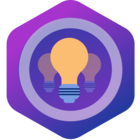Why Accessibility Is Important
Accessibility isn’t just a legal requirement (like Germany’s BITV regulation for the public sector); it’s a fundamental part of building fair, inclusive digital experiences. When tools and platforms are accessible, people with disabilities (whether visual, auditory, motor, or cognitive) can use them confidently, without barriers. This means better opportunities for all, and a more diverse, innovative workplace.
How Personio Supports Accessibility
Personio is committed to accessibility from the ground up. Our design and development process follows the WCAG 2.2 AA guidelines, which are the gold standard for digital accessibility and form the basis of Germany’s BITV regulation. This means that:
- Images and media have alternative text, so everyone can access information, even if they’re using a screen reader.
- Pages use structured headings and semantic HTML, making navigation logical and simple.
- Contrast ratios and scalable text help users with visual impairments read comfortably.
- Keyboard-only navigation and screen reader compatibility is a continued investment, ensuring everyone can interact with our platform, no mouse required!
- Consistent, clear language makes instructions and error messages easy to understand, supporting users with cognitive or language-related challenges.
To measure our progress, we use automated tools like Lighthouse, which scores our product’s accessibility. As of October 2025, our average score across the product is considered “Good” by WCAG standards! Manual testing and ongoing improvements are part of our roadmap, so we’re always working to make Personio better for everyone.
Supporting Colleagues with Different Accessibility Needs
Accessibility isn’t just a technical issue. It’s a team effort. You can support colleagues by:
- Listening and asking about their needs, rather than making assumptions.
- Sharing feedback or best practices for making meetings, documents, and tools easier to use.
- Using clear language and accessible formats in your daily work.
Now, we would love to hear from you all about tips and tricks. Your insights help us build a more inclusive Personio community. Drop your best practices, questions, or stories in the comments below—let’s learn from each other and keep raising the bar for accessibility.
Best,
Lauren





